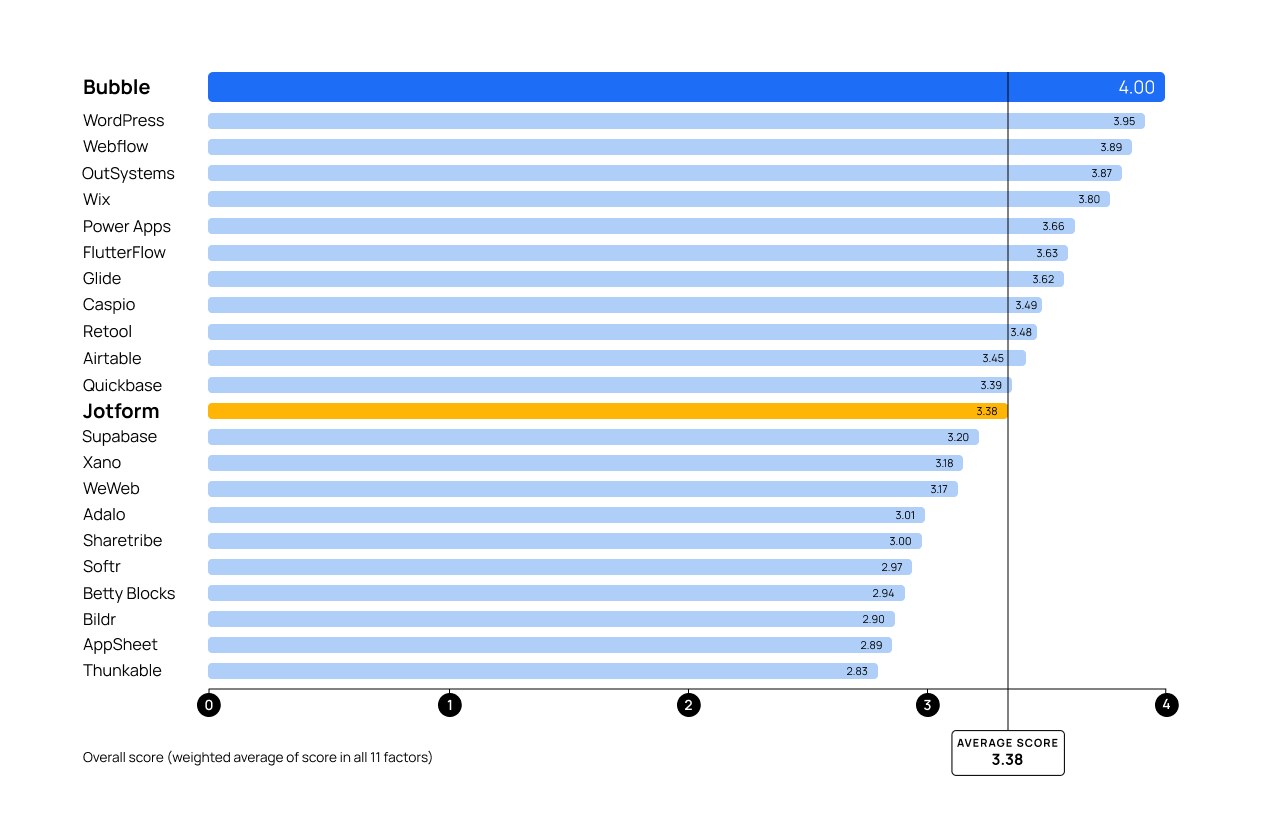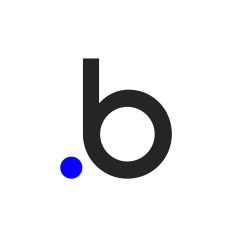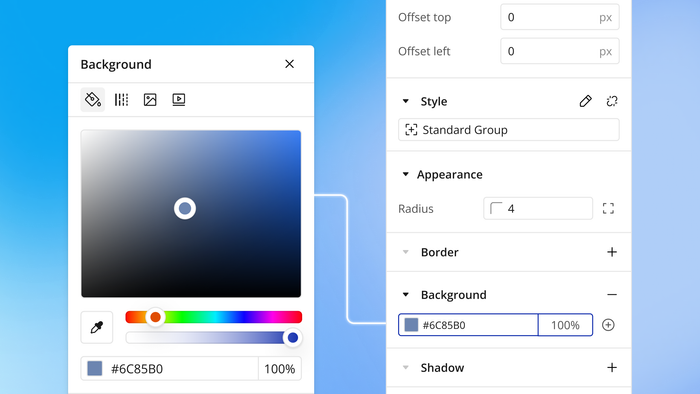Jotform Apps is an extension of the Jotform platform, founded in 2006, designed to make it easier to get the data you need from forms. Jotform Apps focuses on allowing users to quickly develop mobile apps, primarily for small businesses. Unsurprisingly, apps on Jotform are mostly form-based, which may allow users to complete tasks like placing an order, scheduling an appointment, completing a registration, or performing other tasks that can be accomplished via a form.
Bubble’s no-code platform has been used to build and scale nearly 5 million applications over the last 10+ years, with startups and enterprises alike choosing to build on Bubble. Bubble’s versatile, flexible, and endlessly customizable platform allows users to create all kinds of apps and projects, from native mobile apps to internal tools and all manner of web apps.
Either platform may work for your project, depending on your use case, but Bubble has the edge when it comes to:
- Customizability
- Flexibility and variety of use-cases
- Functionality
- Full-stack support
- Resources and community
Of course, we are Bubble, and so naturally, we’re big fans of our own platform. That’s why we tapped the wider no-code community to find out what mattered most to them when choosing a platform. Then we used their responses to develop a rubric that more objectively compares Bubble to solutions like Jotform.
In this article, we’ll show you how these two platforms stack up — and you’ll see why no matter what you’re trying to build, Bubble is a fantastic option. If you want to learn more about the process of choosing the right tech for your use case, check out our full buyer’s guide to 23 different no-code development platforms.
Jotform vs. Bubble: At-a-glance comparison
Let’s start with a high-level overview of how Bubble and Jotform compare.
| Jotform | Bubble | |
|---|---|---|
| Common use cases | Jotform is a popular solution for creating custom forms with automated workflows. | Bubble is one of the fastest ways to build custom, production-grade apps for web and mobile. |
| Where they shine | Jotform is well-known for being easy to learn and providing a simple solution for collecting form data. | Bubble accelerates speed to market and lets even non-technical founders build highly custom apps affordably. |
| Overall score | ⭐⭐⭐💫(3.38) | ⭐⭐⭐⭐ (4.00) |
| Use-case versatility | 🟥🟥⬛⬛⬛ | 🟩🟩🟩🟩🟩 |
| Full-stack coverage | 🟨🟨🟨⬛⬛ | 🟩🟩🟩🟩🟩 |
| Performance | 🟩🟩🟩🟩⬛ | 🟩🟩🟩🟩⬛ |
| Ecosystem | 🟩🟩🟩🟩⬛ | 🟩🟩🟩🟩⬛ |
| Cost | 🟨🟨🟨⬛⬛ | 🟨🟨🟨⬛⬛ |
| Customizability | 🟥🟥⬛⬛⬛ | 🟩🟩🟩🟩⬛ |
| Compliance | 🟩🟩🟩🟩🟩 | 🟩🟩🟩🟩⬛ |
| Code ownership | 🟨🟨🟨⬛⬛ | 🟨🟨🟨⬛⬛ |
| Learning curve | 🟩🟩🟩🟩⬛ | 🟨🟨🟨⬛⬛ |
| Resources | 🟨🟨🟨⬛⬛ | 🟩🟩🟩🟩⬛ |
| Community | 🟩🟩🟩🟩⬛ | 🟩🟩🟩🟩🟩 |
We wanted to compare these platforms based on what matters most to actual no-code developers — so we asked them. In our 2024 State of No-Code Development Survey, more than 350 no-code founders, developers, freelancers, and hobbyists rated the importance of 17 factors when choosing a no-code builder. We developed these categories using their feedback.
In the fall of 2024, we scored Bubble and Jotform from 1–5 in each of these areas, with 5 being the best score. Each score had specific requirements, and we’ll explain more about those below.
We also gave each platform an overall score using a weighted average. This was based on how important the category was to no-code developers in the survey. Here’s how Bubble and Jotform compared.

Jotform vs. Bubble on use-case versatility
How flexible and versatile a platform is can affect you a lot in the long run. If a platform is mostly used for particular kinds of apps or projects, you might be able to use it for other things, but the platform’s parent company is likely going to focus on features and support for those use cases above all others.
That can mean your project is limited or stifled in the future if your needs change, you decide to expand your project, or you want to scale beyond what the vendor focuses on.
Our scores for use-case versatility try to take this into account, rating each platform based on the range of use cases most people use them for.
Bottom line: Jotform offers a narrow set of use-cases based around form-based tasks, while Bubble is an unlimited platform that can be used for building any kind of full-stack apps across any industry.
| Score | Criteria |
|---|---|
| 1 | Not particularly well-known or well-perceived by the market for any use cases |
| 2 | Narrow set of use cases as perceived by the market |
| 3 | Use-case versatility across app types or industries, but not both. |
| 4 | Use-case versatility across either app types or industries, with some use-case versatility in the other category |
| 5 | Shown to be proficiently versatile across both app types and industries |
How Jotform stacks up: Jotform is mostly used to create forms. Even on Jotform Apps, forms are the centerpiece of what “powers” most apps you can build on Jotform. For example, you might build:
- An app that provides an interface for users to view your products and make a purchase through a payments-enabled order form.
- A restaurant app that allows users to book a table or make an order through online forms.
- A portal for a high school that allows parents to view and complete multiple forms, such as to register their child for various activities, view the handbook, or make a payment.
- An internal tool that allows employees to fill out their timesheets, request time off, or fill in other reports or forms.
Apps on Jotform can provide a way to create a centralized “portal” or user interface for users to fill out online forms or complete form-based tasks, like submitting a file or making a purchase. But while the tasks you can complete with Jotform vary, all of those use cases must be supported by a basic form element.
Jotform’s versatility score: 2/5
How Bubble compares: Bubble offers powerful no-code visual programming you can use to build any kind of app in any industry. With nearly 5 million apps built on Bubble, you’ll find almost unlimited use cases, like:
- A travel marketplace for vacation home swapping and rentals
- A procurement portal and database for a major metropolis
- An education platform for short-form video-based courses
- An AI-powered customer service SaaS solution
- A global personal investments tracking platform
- An education portal and platform for a medical school
From specialized, industry-specific apps to internal tools, marketplaces to e-commerce websites, AI-powered apps to SaaS tools, and more, Bubble lets you build anything you can imagine. That means you’ll never grow out of Bubble, nor will you be limited in what you can do or build on it.
Plus, Bubble makes it easy to scale your app, allowing you to use it among your internal team, a small group of users, or scale up to hundreds of thousands of users.
Bubble’s versatility score: 5/5
Jotform vs. Bubble on full-stack coverage
When it comes to software development, there are three main pieces of your “tech stack” you need to cover: design (the frontend), data (the backend), and logic (the workflows that connect those two pieces and make your app work). But many no-code platforms only focus on one or two of these areas, and they can’t give you access to the entire stack.Our scoring criteria for this category focuses on how much of the development process the platform lets users access — in other words, how close the platform is to being a “full stack” solution.
Bottom line: Jotform offers some control over your design and data. Bubble offers complete control over all three elements — design, data, and logic — to provide a full-stack solution.
| Score | Criteria |
|---|---|
| 1 | Capabilities in one area: design, data, or logic |
| 2 | Capabilities in one area, gives user limited access to another |
| 3 | Capabilities in two areas |
| 4 | Capabilities in two areas, gives user limited access to the third |
| 5 | Full-stack: Capabilities in design, data, and logic |
How Jotform stacks up: Jotform offers functionality for design and data. While you can create some “workflows” and automations for your app, it’s a long way from being true logic for your app, and it offers very limited functionality and customization.
For data, Jotform tables hold and record the data collected by your forms or apps. Basic spreadsheet-like tables power that database, and you can perform basic interactions with your data manually, or via your forms, visual reports, or simple app interfaces.
For design, Jotform allows you to customize the design of your forms, as well as build simple apps or visual reports that provide a user interface for your tables (databases) or forms. That is, instead of a user manually updating a spreadsheet with their order request or time worked, the user can use a simple form or app screen to submit that data instead.
Jotform’s stack coverage score: 3/5
How Bubble compares: Bubble is one of the few full-stack no-code development platforms on the market. You can fully customize the look, feel, and functionality of your app in a single tool, and you never have to combine it with another solution to control your software’s design, data, and logic.
What that means is that on Bubble, you have full control over:
- How your app looks and feels (design)
- What pages or screens your app or website has (design)
- How your app works and what functionality it has (logic)
- How users interact with your app (logic)
- What information you collect (data)
- How that information is stored and organized (data)
- How your app uses that information to perform actions or power workflows (logic)
- And more!
Bubble can fill in gaps in your development stack (i.e., providing a customizable frontend for your Jotform or powering real app logic and workflows based on Jotform data), or it can be an all-in-one solution.
But you aren’t required to manage separate platforms to build your app, and you only ever need to pay for one.
Bubble’s stack coverage score: 5/5
Jotform vs. Bubble on performance
A no-code platform’s technical performance can make or break your experience with it. A stable, reliable platform gives you the foundation for a stable and reliable app. But no matter how well you build, if your platform isn’t reliable, your app won’t be either.
When comparing Bubble and Jotform, we took into account how the platform performs as you scale up server demand. That is, can the platform grow with you, or does performance take a hit when your user base grows too large?
Bottom line: Jotform and Bubble both offer stable, reliable performance, with Bubble taking the edge in communication and transparency about any outages.
| Score | Criteria |
|---|---|
| 1 | Frequent outages |
| 2 | Outages scale with user growth and/or company has no status page |
| 3 | Infrequent outages, but communicated with limited transparency to the user or sporadic outages, but quickly and transparently addressed |
| 4 | Infrequent outages, with any that do occur quickly and transparently addressed |
| 5 | Rare outages |
How Jotform stacks up: Jotform recent uptime is strong, with infrequent outages overall. They maintain a status page and incident history, but incidents from the past year aren’t communicated in much detail.
Jotform’s performance score: 4/5
How Bubble compares: With an uptime of 99.88% in the last 90 days (since publication of this article), Bubble offers strong uptime and reliable performance. The platform rarely experiences outages, especially ones that affect a large number of users. But if they do happen, our team does two things especially well:
- We detect and resolve the issue quickly to get you back online.
- We clearly communicate what’s happening and what we’re doing about it, so you’re never in the dark.
We know that your app (and business) relies our performance, so we spend a lot of time, energy, and resources investing in our stability and reliability. If you’re experiencing an issue, start by checking Bubble’s status page. You can also keep up to date on outages via @BubbleStatus on X and the forum.
Bubble’s performance score: 4/5
Jotform vs. Bubble on ecosystem
Choosing a no-code platform isn’t just about picking a platform. You’re also choosing a platform ecosystem — the variety of third-party tools, services, integrations, and partnerships — that surround that platform. The quality of these ecosystems can vary a lot, from robust and accessible to minimal and hard-to-use.
Our ecosystem quality scores are based on what third-party services a vendor offers, the third-party products that have been created, how accessible they are, and what partnerships they have.
Bottom line: Jotform offers integrations and plugins to help power your app or connect it to other tools. Bubble offers a more robust ecosystem overall, with thousands of integrations, plugins, and templates, plus strategic partnerships with agencies, startup programs, and universities.
| Score | Criteria |
|---|---|
| 1 | Minimal third-party services that are challenging to use |
| 2 | Minimal third-party services, but they’re easier to use |
| 3 | Robust third-party services, but they’re challenging to use |
| 4 | Strong strategic partnerships; robust third-party services, but not perfectly seamless |
| 5 | Strong strategic partnerships; robust third-party services that are easy to use |
How Jotform stacks up: Jotform offers plenty of integrations — more than 200 — plus some plugins, which they call widgets. Jotform integrations allow you to connect your form to other tools in your tech stack, which allows you to automatically link data and set up automations.
For example, you might use the PayPal or Stripe integration to collect payments for appointment bookings directly through Jotform, or connect Jotform with Slack to notify team members about new submissions.
Jotform even integrates with Bubble — allowing you to create new things in your Bubble database based on form submissions. (And of course, you can use an API on Bubble to embed Jotforms into your Bubble app, website, or backend.)
Jotform’s ecosystem score: 4/5
How Bubble compares: Bubble has a robust ecosystem that allows you to expand the capabilities of your app, plus connect it to basically any other tool you use — without having to code integrations yourself. (Although, if you want to, Bubble makes it possible to do that, too!)
Bubble features thousands of plugins and integrations you can use in your app, and you can always use the API Connector to link your app to other tools in your tech stack, even if there isn’t a direct integration. Plus, an ever-expanding template library from the Bubble community gives you access to pre-built pages, layouts, workflows, elements, designs, and more, so you can move and build faster.
Bubble also has strategic partnerships with startup programs and universities, including Microsoft For Startups, Harvard University, and Columbia University.Need to hire someone to build your app? Bubble’s agency database helps you filter and compare agencies that use Bubble by experience, services, cost, language, and region, so you can quickly find a partner that’s right for your project.
Bubble’s ecosystem score: 5/5
Jotform vs. Bubble on cost
The cost grades we gave Jotform and Bubble consider the cost of using the tool, with higher scores reflecting lower costs. While there are many factors that impact cost, we primarily accounted for the pricing model, the platform’s price, and how much free access the vendor allows.
Bottom line: Bubble and Jotform both offer free tiers for limited usage. Paid plans start at $29 per month for Bubble and $34 per month for Jotform.
| Score | Criteria |
|---|---|
| 1 | No free tier |
| 2 | Free tier, deployment on custom domain costs more than $50 per month |
| 3 | Free tier, deployment on custom domain costs less than $50 per month |
| 4 | Free tier, deployment on custom domain costs less than $10 per month |
| 5 | Free deployment on custom domain |
How Jotform stacks up: All of Jotform’s plans — including the free tier — come with access to all the features and functionality of the platform. The free tier includes up to five forms, with limits on form submissions and storage space. If you need more forms or more submissions, upgrade to paid tiers, which start at $34 per month.
Jotform’s cost score: 3/5
How Bubble compares: Bubble’s free plan also gives you access to the full functionality of the app, for as long as you need it until you’re ready to launch. Once you launch, paid monthly plans are available based on the workload demand for your software and the number of people working on your app.
Put simply: Bubble’s features and support are designed to scale with your app as it grows, and so pricing does, too. Plans start at $29 a month.
Bubble’s cost score: 3/5
Jotform vs. Bubble on customizability
Every no-code platform offers some customization. But for a lot of platforms, most of your customization options come in the form of adding custom code — which kind of defeats the point of having a no-code platform.
Ideally, your platform should offer ample customization features that can be done in a visual editor (not just with custom code), and even better if you can use built-in AI tools to add customized features and design through prompts.
In this comparison, our customizability scores are based on how flexible a platform is — both in terms of what you can build with it, and how easy it is to add new features throughout your software’s lifecycle. We also considered whether the platform makes customization easier with AI.
Bottom line: Most of the customization Jotform offers is in your frontend design, but form options, components, apps, and workflows are all very templatized. Bubble, on the other hand, offers complete customization and control over any part of your app, down to the tiniest detail — design, functionality, workflows, data, and more.
| Score | Criteria |
|---|---|
| 1 | Minimal ability to customize frontend, minimal ability to add new functionality, high level of difficulty to build beyond templates |
| 2 | Customizable frontend, minimal ability to add new functionality, limited generative AI assistance |
| 3 | Customizable frontend, open to adding new functionality, robust frontend AI use cases |
| 4 | Everything from 3, plus AI-generated logic and data schema |
| 5 | Everything from 4, plus conversational editing that allows for entire AI-generated apps |
How Jotform stacks up: Jotform is very templatized and has limited customization options. You can start from scratch with a very “bare-bones” canvas. However, even though you can start from a blank canvas, your creation options are pretty limited. You have to use Jotform’s pre-built components, which may or may not be what you want or need.
Jotform offers basic components for building your form (i.e., question types, signature fields, etc.), payment integrations to collect payments within your form, and some basic widgets and integrations to add more advanced functionality (i.e., data pickers, tables, and so on). You can’t customize or create new elements, conditional logic, or workflow automation beyond what’s included in the platform.
Frontend design offers more customization options, with the ability to add custom colors, fonts, and custom CSS to adjust the design and branding of your form. But in general, you have to work within the boundaries of what Jotform has created and set for their pre-built elements and make basic customizations. The same goes for their workflows and apps.
Jotform’s customizability score: 2/5
How Bubble compares: By contrast, Bubble is fully customizable, with an unlimited number of ways to make your app your own.
On Bubble, you can build just about anything, design it any way you imagine, and add whatever capabilities or advanced features you want, either directly in the Bubble visual editor or through our API Connector. Bubble’s customizability is limitless for both functionality and design.
Some Bubble users — particularly those from more established brands — also appreciate how they can replicate their entire design system (down to the pixel) with Bubble. Bubble is really a blank slate: While you can work from a template or pre-built components, you also have complete control. You can edit those components as much as you like, build your own, design custom workflows, organize your database however it makes sense for you, and so on.
Plus, while you should never have to use custom code to add capabilities on Bubble, it’s always an option for those who want to.
Bubble’s customizability score: 5/5
Jotform vs. Bubble on compliance
Just as the performance of your platform directly impacts the performance of your app, your app, generally, can only be as compliant as the platform you build it on. A secure development platform gives you a good foundation to work from, and you can often shore up a platform with additional security features if you need to.
Our compliance scores are based on which standards a platform complies with (by default) and whether it offers a path to compliance with additional standards. Higher scores correspond to more sophisticated standards.
Bottom line: Jotform and Bubble both offer secure platforms. Jotform’s highest levels of security are only available on the highest pricing tiers, while Bubble’s are available to anyone who wants to build securely.
| Score | Criteria |
|---|---|
| 1 | No stated native compliance certifications |
| 2 | No native compliance certifications, but either 1) can be made compliant with plugins or 2) gives instructions for hosted apps to become compliant by themselves |
| 3 | SOC 2 Type I compliant |
| 4 | SOC 2 Type II compliant or ISO 27001 compliant |
| 5 | SOC 2 Type II compliant and HIPAA compliant |
How Jotform stacks up: Jotform offers good security features. SOC 2 Type II compliance is built-in for all users, and HIPAA compliance is an option as well, making Jotform a popular choice among healthcare organizations looking for a simple form solution.
Important to note, though: Jotform’s HIPAA compliance is only available on the Gold ($99/month) or Enterprise (custom pricing) tiers.
Jotform’s compliance score: 5/5
How Bubble compares: Bubble also offers built-in compliance with SOC 2 Type II, which means your Bubble app can easily pass long-term security audits. We’ve also implemented dozens of other solutions to help protect your data, and every Bubble pricing plan comes with access to Flusk’s best-in-class security-check features.
If you want or need your app to follow other frameworks like GDPR or HIPAA, it’s possible to build on Bubble and meet these standards — just follow our compliance articles as you build to create a compliant app.
Bubble’s compliance score: 4/5
Jotform vs. Bubble on code ownership
For short-term projects, fully owning your app’s code might not be a big deal. But if you’re planning on building something that you and your users can use for a long time, it helps to know how much you can migrate off the platform should you ever need to.
Our scoring criteria for the ownership category are based on how much freedom a platform gives you to export your work — specifically your code and your data.
Bottom line: Jotform and Bubble both allow users to export app data, but not code, which is fairly standard among no-code platforms.
| Score | Criteria |
|---|---|
| 1 | No exports supported |
| 2 | Allows partial data exports |
| 3 | Exports data, but not code |
| 4 | Exports data and code, but in limited languages and formats |
| 5 | Exports all data and code |
How Jotform stacks up: Jotform allows users to download submission data and uploaded files, as well as the source code for your forms. You can’t, however, download source code for any apps or frontend form interfaces you build in Jotform.
What this means is that if you have forms in Jotform that you want to export and import into another builder, like Bubble, doing so is super simple. However, if you start building apps and interfaces in Jotform, you won’t be able to transfer those elsewhere at some point if you run up against the limits of Jotform’s app-building tools and need something more robust.
Jotform’s code ownership score: 3/5
How Bubble compares: Bubble always allows you to export data at any time, but you can’t export code. That’s because when you build on Bubble, your app’s software is powered by our platform’s proprietary source code that enables you to build visually. In order to release your source code, then, we’d either have to separate it from ours — which would break your app — or release our source code. However, our promise to customers is that if your organization outlasts Bubble, we’ll release our source code under an open-source license.
Bubble’s code ownership score: 3/5
Jotform vs. Bubble on learning curve
No-code development is leagues easier and faster to learn than traditional development and programming languages, but it still requires some time and effort. Every platform uses visual programming in different ways, and some are more intuitive than others.
There will always be a learning curve with new tools and platforms; the question is how steep of a learning curve you’re willing to take on.
Our learning curve scoring criteria is based on how difficult a platform is to learn and how fast you can actually start building.
Bottom line: Jotform’s more limited platform makes it easier to learn, but Bubble offers an easy onramp and manageable learning curve to a more powerful platform, even for non-technical users.
| Score | Criteria |
|---|---|
| 1 | Extremely difficult to learn (comparable to learning code), demands significant technical knowledge, extensive time investment |
| 2 | Very difficult to learn, demands strong understanding of logic and some technical familiarity, extensive time investment |
| 3 | Moderately difficult to learn, demands moderate technical familiarity, moderate time investment (courses, tutorials, community support, etc.) |
| 4 | Somewhat easy to learn, demands minimal technical familiarity, allows you to start building on your first day |
| 5 | Extremely easy to learn, no technical familiarity needed, allows you to build something in your first hour |
How Jotform stacks up: Jotform is super easy to get started with. Many users online praise the intuitive, user-friendly interface and say that it’s pretty simple to build your first forms, even as non-technical users.
Of course, as noted, Jotform is focused on forms, so it’s very limited in terms of what you can build. The upside of that is that there’s less of a learning curve. The downside is limited use cases, functionality, and customization.
However, if your use case and needs fit with Jotform’s offers, you’ll likely have no problem getting your forms up and running and collecting the data you need.
Jotform’s learning curve score: 4/5
How Bubble compares: Bubble is super easy to get started with as well. While learning all the ins and outs of Bubble’s platform takes time and effort, getting started is simple and we provide plenty of help, resources, and scaffolding to help you learn as you go, no matter your skill level.
A technical background makes it easier to get more from the platform, faster, but you don’t need experience to hit the ground running. If you want to make it even easier to get started, you can start with a template and simply customize from there. To make things even easier, you can get started with Bubble’s AI app generator. Describe the app you want to build in your own words and Bubble AI will create an overview of key features. Add, remove, or edit key features as much as you want, and generate when you’re ready. In moments, you’ll have a beautiful, responsive, and functional application that’s ready for you to iterate on.
Even with no technical background, Bubble makes it easy to build any kind of app you have in mind.
Bubble’s learning curve score: 3/5
Jotform vs. Bubble on education and documentation resources
Even for experienced developers, you can’t be expected to know and understand the ins and outs of a new platform from day one. Good educational resources and robust technical documentation make it possible for everyone — from experienced developers to non-technical builders — to reap the benefits of visual programming.
A great no-code platform has plenty of high-quality resources that cover most features and aspects of the platform, so you can learn at your own pace.
Our scores for a platform’s resources are based on how much first-party educational materials it has — like guides, tutorials, and technical documentation.
Bottom line: Bubble has more robust and extensive documentation and educational materials, making it easier to get the most out of the platform. Jotform offers basic documentation and help center articles that explain how to use their primary features.
| Score | Criteria |
|---|---|
| 1 | Low-quality educational resources |
| 2 | Medium-quality resources |
| 3 | High-quality resources, low coverage |
| 4 | High-quality resources, medium coverage |
| 5 | High-quality resources, comprehensive coverage |
How Jotform stacks up: Jotform has solid technical documentation in their help center, as well as some case studies, which can help give you an idea of what you can do with the platform. But their documentation isn’t as clear and organized as you might expect from other no-code platforms.
That said, since Jotform’s platform is more basic with limited options, less documentation is generally needed to get a feel for the platform. They offer limited video or step-by-step tutorials, so your best bet for support is to search the help center directly with what you’re looking for.
Jotform’s education and documentation score: 3/5
How Bubble compares: Bubble offers a huge library of both high-level educational content and technical support documentation for all levels of builders. Experienced developers can find resources for advanced features and complex building in the Bubble manual, while non-technical developers can find resources on our blog, follow our step-by-step building guides, or take a getting started course.
And anyone can use our comprehensive online user manual to get detailed information on any of Bubble’s features. If you’d rather learn by watching or doing, we have hundreds of video resources, plus bootcamps and even a Bubble Developer Certification program for those ready to become an expert in the platform.
Bubble’s education and documentation score: 4/5
Jotform vs. Bubble on community
Building an app — whether it’s a small project or the product for your new startup — is better in community. A great no-code platform offers community resources and channels for you to exchange resources, tips, and feedback with other builders.
It’s also worth considering how active the platform’s team is in their own communities. The more actively involved vendors are in the communities that form around their platforms, the more aware they are of users’ needs and sentiments — and the more access you have to the people who make decisions about the platform.
Our scores reflect how active a platform’s developer community is and the degree to which the platform vendor participates in the community.
Bottom line: Bubble offers a robust and active community full of other developers, founders, and builders. Jotform has a live support team and a forum of historical support requests and answers you can search when you need help.
| Score | Criteria |
|---|---|
| 1 | No community channels |
| 2 | Community channels exist, but participation is low |
| 3 | Active community, some company participation |
| 4 | Robust community, regular and valuable company participation |
| 5 | Everything in 4, plus in-person company events |
How Jotform stacks up: Jotform offers a live support team which is available 24/7, plus a forum of previous support requests and answers. The forum’s main focu is not for users to interact with other Jotform users, but the company support team does give regular, prompt, and robust feedback and support via that channel.
The forum isn’t organized in any particularly helpful way (simply all queries in reverse-chronological order), but it does have a search feature so you can try to narrow down relevant threads.
Jotform’s community score: 4/5
How Bubble compares: Many Bubble builders see our developer community as one of the platform’s greatest strengths. Not only does Bubble host a highly active forum where posts regularly see thousands of views and hundreds of comments, but Bubble users are also active on multiple subreddits, Discord groups, WhatsApp, Slack, Facebook, and more. Whenever you need insights, feedback, or support, the Bubble community will be there to help.
Bubble’s team is also active in our forums, so you can reach us directly as well as engage and provide feedback and support for peers.
We also host in-person and virtual events. And when there are important announcements, we make sure to share them with our followers on X and LinkedIn, too.
Bubble’s community score: 5/5
Bubble vs. Jotform: Which one is for you?
Both Bubble and Jotform Apps offer no-code platforms for building web and mobile apps for non-technical builders, with strong ecosystems, reliable performance and security, and an affordable cost.
However, Bubble and Jotform shine in completely different use cases.
Jotform Apps is great if you’re looking to make a very simple app or portal based on a form-related function or workflow, such as placing orders, scheduling appointments, or completing forms to track business operations. With a drag-and-drop platform, there isn’t much of a learning curve, and it’s pretty easy to build different forms and start collecting data.
However, Jotform offers limited customization beyond design, and you don’t have much control over the functionality, workflow automations, or logic of your app. If your use case and needs fit within Jotform’s pre-built solutions, it’s an easy-to-learn and affordable option for building forms. However, if your needs expand or you want to add other features in the future, you’re likely to find yourself boxed in by Jotform’s limitations.
That said, Jotform integrates well with Bubble. If you’ve already gotten started with Jotform but now you need something more robust or flexible, you can import your Jotforms into Bubble and build forward from there without having to start over.
Bubble, by contrast, comes out ahead for almost any other use case, with a truly full-stack, customizable, and versatile no-code builder. On Bubble, you can build absolutely anything — from scalable SaaS tools and marketplaces, e-commerce stores to custom hubs and client portals, to data-driven reporting dashboards, management tools, and more. Bubble lets you use the power of no-code to create tools tailor-made for your team, business, workflows, and goals.
You’re never going to outgrow Bubble or be limited by pre-built components or workflows. If you want to start from a template, use our component library, or use AI to design the layouts and workflows you need, those are all options. But if you want to start with a blank page and build exactly what you’re envisioning, pixel by pixel, go for it. And while you never need to use custom code on Bubble, you always have the option available if you want to.
Despite Bubble having a much more complex and robust platform, it still comes with a manageable learning curve, even for non-technical builders. We offer lots of entry points to start building, depending on what you want to make and your skill level. Plus, you’ll find plenty of Bubble resources for learning no-code and our platform, from how-to build guides, videos, courses, and more.
If you’re still stuck, turn to our community for help and support. The Bubble team, alongside thousands of global developers and builders, are here to support you as you work on your project.
Want to see how Bubble compares to other Jotform alternatives? Check out some of our other comparisons:
Choose the no-code development platform that’s right for you
The no-code platform you choose completely shapes what your products and tools can actually do, the speed with which you can bring them to market, the ongoing impact development has on your budget, and the experience you’ll have for years to come.
Want to learn more about what goes into choosing a no-code development platform, along with a more detailed breakdown of the choices available to you? Check out our buyer’s guide to no-code development platforms.
The best way to decide which no-code platform is right for you? Try them yourself. You’ll see the difference, especially if you start with these comparisons in mind.
Build for as long as you want on the Free plan. Only upgrade when you're ready to launch.
Join Bubble






